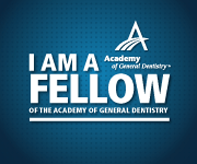Dentures
Dentures are a solution for people who have missing teeth. A removable prosthesis, dentures are a way to bring back function and esthetics to those without teeth. There are many varieties but the three main types are complete or full dentures for those missing all their teeth on either arch of the mouth, partial dentures for those missing some teeth on either arch of the mouth, or implant retained overdentures for those missing teeth but want more stability than is offered by traditional dentures.
Complete Dentures:
These are removable and can be for either all missing teeth on the bottom arch or top arch. For those who need teeth removed but are afraid of being without teeth while you heal, immediate complete dentures are a great option. This denture is made before the day of extractions and on the day of extractions you receive your denture. Immediate complete dentures can help avoid chewing issues or feelings of embarrassment because you are missing teeth. Both conventional dentures and immediate dentures are made over the span of a few measuring appointments with your dentist, during this time your smile is designed as well. Your dentist will ask for your input in choosing shape, size and color of the teeth while trying their best to maintain functional design.
Partial Dentures:
These dentures are for people missing some teeth but not all. They can be for either the lower arch or upper arch. Partial dentures are advantageous when compared to complete dentures because they use your remaning teeth as anchors to stay in place during chewing. These anchors are usually made of metal and are called clasps, however, modern techniques have allowed clasps to be made out of resin so that they are less noticeable. Partial dentures are also made over a few appointments with the assistance of a dental laboratory so discuss this important fact with your dentist if time is an issue.
Implant Overdentures:
This version of a traditional denture utilizes the modern technique of implant support. For those having difficulty with keeping the dentures from shifting or staying comfortable, this may be a solution. Essentially, your dentist would place a few implants on the upper or lower arch (or both) and create a clasp like connection between the implants and the denture which allows for greater stability. The denture remains removable so it can be cleaned at the end of the day but does not require denture adhesive to keep it in place during function.



